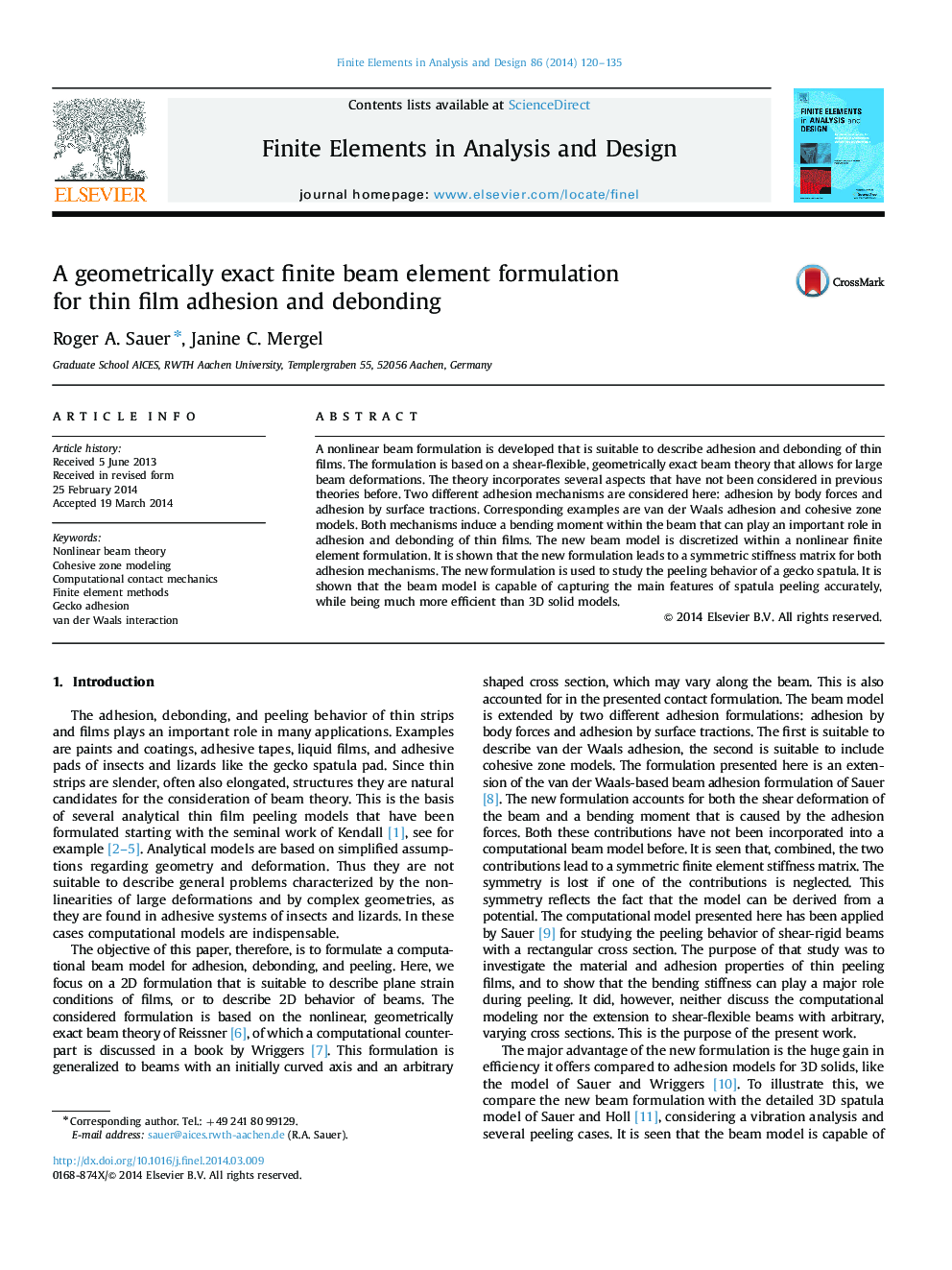| کد مقاله | کد نشریه | سال انتشار | مقاله انگلیسی | نسخه تمام متن |
|---|---|---|---|---|
| 514345 | 866729 | 2014 | 16 صفحه PDF | دانلود رایگان |
• This work presents a nonlinear finite beam element model for thin film adhesion and debonding.
• The theory accounts for shear-flexible, initially curved beams with varying cross section.
• Two different adhesion mechanisms are considered: adhesion by body forces and by surface tractions.
• The new model allows for a very efficient yet accurate description of thin film peeling.
• This is demonstrated by several examples, focusing on the peeling behavior of gecko spatulae.
A nonlinear beam formulation is developed that is suitable to describe adhesion and debonding of thin films. The formulation is based on a shear-flexible, geometrically exact beam theory that allows for large beam deformations. The theory incorporates several aspects that have not been considered in previous theories before. Two different adhesion mechanisms are considered here: adhesion by body forces and adhesion by surface tractions. Corresponding examples are van der Waals adhesion and cohesive zone models. Both mechanisms induce a bending moment within the beam that can play an important role in adhesion and debonding of thin films. The new beam model is discretized within a nonlinear finite element formulation. It is shown that the new formulation leads to a symmetric stiffness matrix for both adhesion mechanisms. The new formulation is used to study the peeling behavior of a gecko spatula. It is shown that the beam model is capable of capturing the main features of spatula peeling accurately, while being much more efficient than 3D solid models.
Journal: Finite Elements in Analysis and Design - Volume 86, 1 September 2014, Pages 120–135
